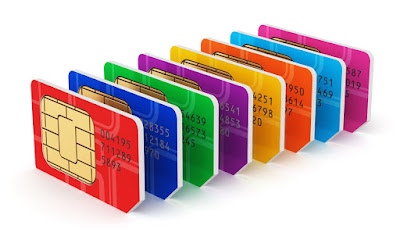Imagine a world where, instead of wanting to replace your SIM card when switch between operators or whereas roaming, configuration can be handled fully manually or over-the-air (OTA). Embedded SIM cards (eSIM) is a concept that’s been developed over the previous few years and accelerated in 2015, and is targeting exactly this flexibility. Some research anticipates that in five years, 20-40% of all devices will be eSIM-enabled, thus disrupting elementary structures in the shopper mobile domain.
Will eSIM disrupt the telecommunication trade by presenting a new structure of client ownership? however ought to service suppliers react to the present threat, or is it in fact associate opportunity?
What is an eSIM?
The eSIM was initially developed to change the provisioning of networks and parameters inside 4G mobile devices. The idea is that rather than mistreatment associate actual, removable SIM, a SIM card can be embedded inside the devices creating configuration software-based—either manually or over-the-air (OTA). This dramatically reduces the barriers of switching between operators, while conjointly lowering the price of device producing and SIM distribution, as the last would get to be pointless.
The idea was developed originally for the IoT/M2M domain, and GSMA already released a commonplace regarding eSIMs earlier this year, but is currently migrating to shopper devices as well.
parallel to the institutionalization exertion, OTT stage players (such as Apple and Google) and device manufacturers (such as Samsung) have nice interest in promoting this conception and technology, in order to realize more of the mobile worth chain at the Communication Service Providers’ (CSPs) expense.
Effective on Industry
Is eSIM good or dangerous for the industry? Depends United Nations agency you raise.
For consumers, eSIM makes switching or roaming abundant easier. As a consumer, instead of inquiring for or purchasing a replacement SIM-card then gap and shutting devices to exchange the SIM, all you need to try and do is provision your phone on-line (e.g., using iTunes) to your new service supplier in the method of acceptive a relevant supply. eSIM may additionally cut back costs attributable to augmented competition attributable to reduced carrier replacement barriers.
For OTT platform players and device manufacturers, it is an excellent opportunity. On top of reducing device’s form-factor prices, e-SIM will modify them to wind up "administration aggregators" and give them a serious advantage within the client possession battle. Regardless of the possibility that OTT players don't give real portable administrations, the fact that network provisioning and set up commerce is simple lessens their dependence on CSPs to sell phones.
For CSPs, it is an excellent challenge bundled with a chance. Obviously CSPs would like to stay the present SIM card that has viscosity. eSIMs that grant customers the freedom to change easily between CSPs could eliminate that viscosity, and increase competition. CSPs are currently finance nice efforts in creating certain that the new eSIM standards limit this freedom (for example, only being allowed to opt for a network once). It is unlikely that CSPs are going to be able to block e-SIM innovations. Be that as it may, inventive CSPs with shrewd multi-play and B2B strategies could be able to supply robust enough differentiators.
Multi-play strategy is a model of how CSPs will preserve their differentiators and viscosity. When a client has multiple administrations (cell, home broadband, TV, cloud and others) all from a solitary CSP, the barrier for switching to a completely different carrier is way higher—and differentiators square measure far more vital.
An example of this development might be found in Apple’s actions last year after they discharged the primary proprietary, programmable Apple SIM within their iPad Air/Mini providing in Apple stores as early as October 2014, and then making the devices SIM-inserted not long ago. The offering lets clients switch service suppliers while not dynamical the SIM-card (with impediments). This exhibits Apple's reasonable interest in increasing their customer possession through SIM disruptions and alternative complementary initiatives. The Apple iPhone portion arrangement dispatched the previous summer is additionally a robust indicator of their interest in client possession.
Most of the short-term disruption affects the competitive landscape between CSPs. However, in the long haul, we may see "new sorts" of CSPs that could assume control client possession from ancient CSPs. This might have an effect on the demands and necessities from the BSS vendors in multiple domains. Some examples are the handling of SIM profile stock (in a cross breed environment), "incidental usage”, Scale, eCommerce, number movableness and others.




0 comments:
Post a Comment
If there is any comments,Please leave a comment at here.